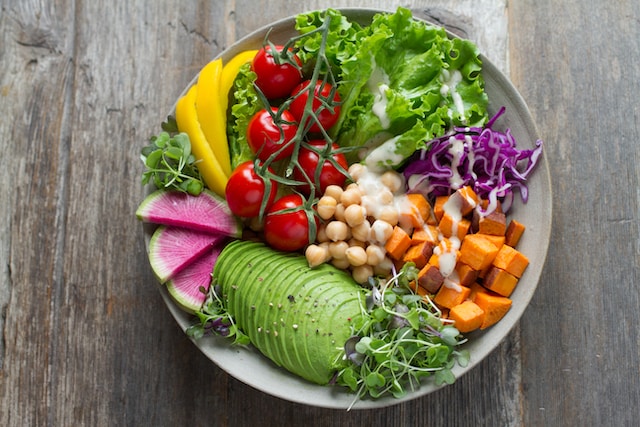
Courtesy of Anna Pelzer/Unsplash
By Cath Isabedra
The food and beverage industry is constantly evolving, driven by shifting consumer trends and technological advances. Recent insights from industry leaders and market research reports shed light on how consumers in Southeast Asia and globally are increasingly placing their health and well-being at the forefront of their purchasing decisions.
We talked to John Jose, Marketing Director, Tetra Pak Malaysia, Singapore, Philippines, and Indonesia, to discuss the different trends shaping the F&B industry.
The Flexi-Shopping Trend: Balancing Health and Convenience
The “Flexi-shopping” trend refers to consumers who prioritize flexibility and conscious decision-making. “Overall, the ‘Flexi-shopping’ trend in Southeast Asia manifests as a flexible yet deliberate approach to spending, where consumers adjust their purchases while prioritizing health benefits and natural ingredients over price,” says John.
This shift indicates a thoughtful approach to consumption, as people are more inclined to invest in products that offer more than just nutritional value. They recognize the significance of making choices that positively impact their overall well-being and are willing to provide the highest quality options for themselves and their families.
According to research by Bain and Company, health benefits consistently top the criteria for consumers in the Asia-Pacific region when considering brands or products, signaling a transition towards a health-conscious mindset.
The Ready-to-Drink Category: Health on the Go
Consumers are not just looking for health benefits. They’re also seeking convenience. “The ready-to-drink (RTD) category plays a significant role in supporting consumers with health-focused lifestyles in Southeast Asia by offering convenience, portion control, nutritional variety, functional benefits, and continuous innovation,” according to John.
Ready-to-drink (RTD) beverages offer a convenient, nutritious option for busy, health-conscious consumers. Enriched with functional ingredients like vitamins and antioxidants, these drinks cater to specific health goals such as hydration or immune support. The category is also diverse, accommodating various dietary needs with options like vegan or gluten-free beverages. Some even double as snack options, blending nourishment and convenience for on-the-go lifestyles.
The ‘In Control’ Trend: A Nuanced Approach to Indulgence and Moderation
The ‘In Control’ trend outlines how people are increasingly using food and drink to gain a sense of control over their lives. John says, “They desire the ability to match what they put into their bodies to their health and life goals, whether that be maximizing their chances of recovery from poor health, to sitting for exams, or preparing for new life stages such as parenthood, peri-menopause, or ageing.” This is leading to a rise in tech-enabled personalized health solutions and making moderation a key trend in the industry.
“For example, Rootine offers a precision multivitamin formula tailored to individual’s DNA, blood vitamin and mineral test results. Some people are carefully measuring their food and drink choices and monitoring what is going into their bodies. In doing so, they can become a better version of themselves and take proactive steps to prevent longer-term health issues,” John furthers.
Plant-Based Beverages: A Sustainable Shift
The plant-based beverage category is projected to grow at a remarkable 13.82 percent annually, reaching a market value of $80.43 billion by 2024. This exponential growth indicates a shift towards healthier, more sustainable choices. “Plant-based beverages cater to a wide range of dietary preferences and lifestyle choices, including vegetarian, vegan, lactose-free, and dairy-free diets,” according to BIS research. The rise in demand for plant-based options also shows that consumers are becoming more aware of the environmental impact of their choices.
“Tetra Pak recognizes that consumer preferences evolve over time, and we continuously monitor and adapt to these changes. We invest significant resources in research and development to stay at the forefront of emerging trends and consumer demands,” John explains.
He adds, “Our packaging materials are designed to ensure product quality, freshness, and safety while minimizing environmental impact. For instance, we have introduced packaging formats with renewable materials and reduced carbon footprint, responding to the rising consumer interest in eco-friendly options.”
Eatertainment: What is it all about?
In today’s rapidly evolving world, technological advancements and digital shifts are reshaping various industries, and the food and beverage sector is no exception.
One of the most intriguing developments is the rise of “Eatertainment,” a trend that seamlessly integrates social media, virtual gaming, and recipe sharing to create a vibrant food community. Social media platforms play a pivotal role in this ecosystem, connecting individuals who share a love for food and culinary exploration. The trend is fueled by our inherent need for joy, connection, and ritualistic aspects of eating and shopping.
As platforms like TikTok become prominent sources of recipe inspiration, it’s clear that the traditional role of celebrity chefs is being eclipsed by relatable content creators and influencers.
John mentions, “For example, Prime hydration drink, created by YouTube stars Logan Paul and KSI, achieved immense success by effectively utilizing online platforms. The product gained widespread popularity and sold out within minutes in the US and the UK, demonstrating the power of leveraging online and entertainment platforms to reach and engage consumers.”
So how can brands tap into this evolving landscape? Embracing online platforms like TikTok can help brands effectively reach new consumer segments. Leveraging the influence of creators and influencers within the eatertainment sphere allows for the promotion of products to a highly engaged and receptive audience.
But adapting to the modern consumer landscape isn’t just about hopping on the latest social media trend. Companies like Tetra Pak are also closely monitoring shifts in consumer preferences, including inflation pressures, to ensure they don’t compromise on quality. They invest significantly in R&D, focusing on sustainability and innovation to meet evolving demands without sacrificing quality.

As wallets get tighter, brands are faced with the challenge of enticing consumers to consider high-quality food. Strategies include value-oriented pricing options like bundle deals and loyalty programs, educating the consumer about the importance of quality food, and leveraging social media to showcase the appeal and benefits of high-quality products.
Staying Ahead in a Digitally-Driven Food and Beverage Landscape
The overarching theme in the food and beverage industry is a shift towards conscious consumption. Consumers are prioritizing health, convenience, and sustainability in their choices, driving brands to innovate and adapt to meet these changing needs. Whether it’s through ‘Flexi-shopping,’ RTD options, taking control through moderation, or opting for plant-based alternatives, the message is clear: today’s consumers want options that are good for them and good for the planet.
Keeping abreast of consumer trends is essential for staying competitive. Companies like Tetra Pak use trend reports, like the Trendipedia report, to inform and align their customers with the latest consumer shifts. These reports form the basis of close collaboration between the companies and their clients, fostering a cooperative approach to addressing consumer demands through product innovation, packaging, and marketing strategies.
The Trendipedia report is especially useful for understanding consumer behavior in different markets, such as Southeast Asia. The insights it offers can guide companies in tailoring their product offerings and strategies to meet regional demands. For instance, the rising interest in eco-friendly products and transparency across the supply chain is captured in Trendipedia’s ‘Green Clarity’ trend, which is driving initiatives like those in Singapore aimed at waste reduction and a circular economy.
With insights from John Jose, Marketing Director, Tetra Pak Malaysia, Singapore, Philippines, and Indonesia.
John has over 26 years of work experience with Tetra Pak in local, regional, and global roles across marketing, sales, and product management. Currently leading the Marketing Function in Tetra Pak Malaysia, Singapore, Philippines, and Indonesia (MSPI), John is responsible for the overall direction of Tetra Pak in MSPI, providing strategic insights and leading the expansion efforts. John was Tetra Pak’s Cluster Portfolio Manager from 2008 to 2010, based in Malaysia. During his tenure as portfolio manager, John supported the new packaging portfolio deployment and development needs for Southeast Asia and South Asia markets. He also ensured the smooth introduction of Tetra Pak’s new products and innovations to local markets. Between 2005 to 2008, John was Tetra Pak’s Global Product Manager and was based in Lund, Sweden.
John graduated from De La Salle University with a degree in Marketing Management. He aspires to see more innovation in products that truly address evolving consumer needs, deliver value across the value chain and are sustainable.
This story first appeared in our “Savoring Innovation: A Glimpse into Tomorrow’s Pantry” issue.









